Superheroes are only as powerful as the villains they battle. In the Golden Age of Comics, comic book publishers could get away with things like establishing silly, one-off villains and forgetting about them in the following issue, but things have changed since then. No matter how good or bad our characters may be, we as the audience want to care about them.
Because of this, people often argue that a superhero is only as good as the supervillains they battle. By this reasoning, it is truly insane that Batman himself has not lost his mind given the sheer number of violent psychopaths in his renown “rogues’ gallery.”
These characters have so many famous supervillains with tragic yet horrifying backstories that HBO Max is focusing a whole TV series on simply Arkham Asylum! Batman has defeated a slew of villains, including Mr. Freeze, The Penguin, Bane, Killer Croc, Carmine Falcone, and Two-Face, in the cases of Croc and Bane.
Even The Joker has lost his life at least once while attempting to kill his beloved Bats, so suffice it to say that neither party came out on top. However, that is the best of the best. Batman is renowned for being an undercover agent with god-like intelligence.
He has battled many more enemies than we could ever conceive, therefore it only makes sense that his rogues’ gallery is full of crazy and ridiculous supervillains whose villainy is based on a plot so utterly preposterous as to genuinely cause comedy.
Do not be fooled, though; these humorous, D-list villains are just as lethal as their A-list rivals, and some of them may even make The Joker appear normal. Without further ado, here are 12 amusing and dangerous Batman villains who are underrated and absurd.
Professor Pyg
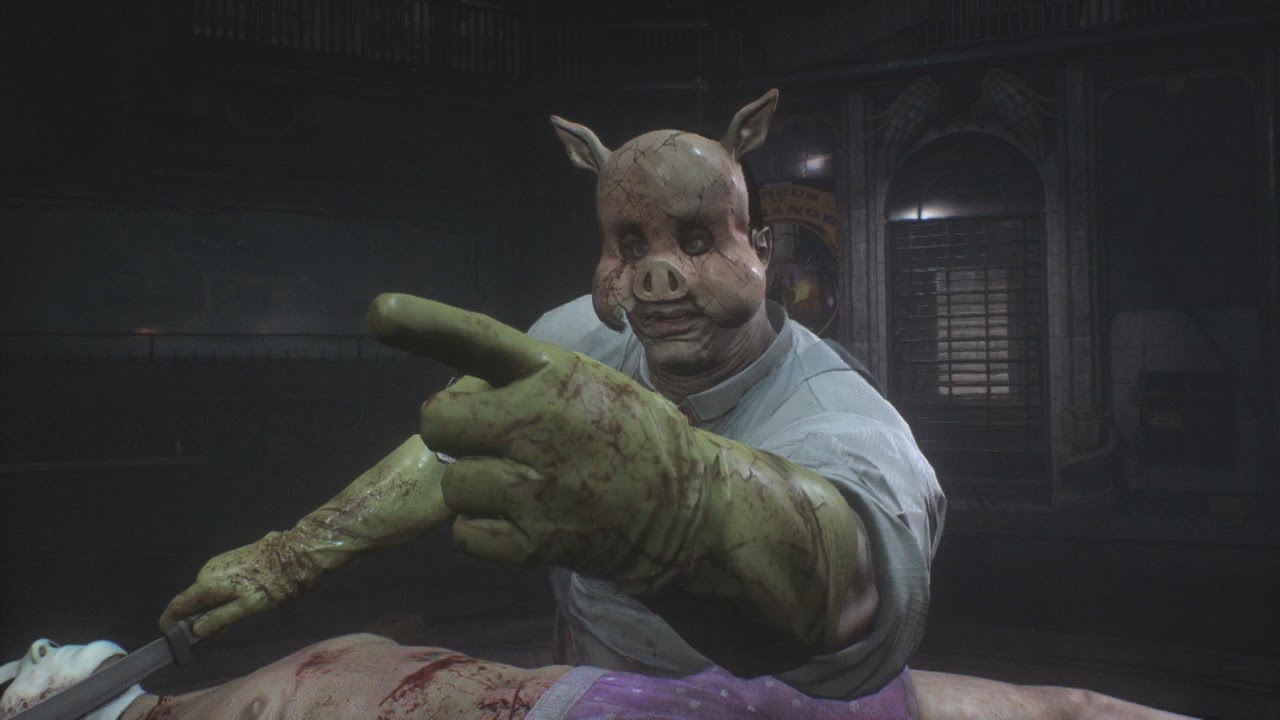
This individual would have given George Orwell nightmares. Imagine committing crimes while donning a literal pig mask. Even if you are a fan of the Gotham TV programme, Samwell Tarly’s moniker Ser Piggy for Professor Pyg feels like an attack, yet it suits wonderfully. Look at that squishy horror of a head mask! Pyg is a brutal serial murderer in that show, and his attire is guaranteed to land him the Best Costume Award at any Halloween party.
And we can not stop making hog and bacon jokes about that one scene where Pyg shows up with a butcher’s knife and an immaculate chef’s coat. But now that we have examined Professor Pyg’s crunchy, if amusing, exterior, it is time to explore his interior and discover why his creator Grant Morrison dubbed him “one of the weirdest, most insane characters that has ever been in Batman” when The Joker is around.
Professor Pyg made his debut as one of the five crime lords of that Gotham City in Batman #666 in a non-canonical future where Damian Wayne is the Batman. The Professor’s face is not covered by his trademark mask in this appearance; instead, it has an uncanny resemblance to a pig’s face. Since his actual past is so messed up, we would have been delighted if DC had left it at that and never visited him again.
The mind-eroding chemical mix employed by the deranged Dr. Dedalus in his final showdown with Batman was created by Lazlo Valentin, a former agent of the clandestine United Nations organisation Spyral. Lazlo was thrown into a labyrinth while working for Spyral and exposed to the substance he made and its mind-altering effects. According to Valentin, “the only exit was via violent, paranoid schizophrenia, drug abuse and D.I.Y surgery.”
After enduring these atrocities, Lazlo Valentin exited the labyrinth as Professor Pyg, the insane surgeon fascinated with Pygmalion whose sole purpose in life was to produce “perfection.” To achieve this, he kidnapped, dismembered, and mesmerised a number of defenceless individuals, turning them into “Dollotrons”—people who resembled Kewpie dolls and were utterly obedient to Lazlo’s every whim.
Morrison noted that Batman’s rogues gallery is overflowing with strange individuals, but distinguished Professor Pyg as being unique because of how “disturbed and disconnected” he was. Pyg does not possess a superpower; rather, his only remaining abilities are those of a physician and “master sculptor,” and even then, his sanity is occasionally called into doubt. But anyone who thinks “Pain is just the beginning of perfection” is certified deadly in our books.
Lazlo Valentin’s experiments can only be described as perhaps the most-depraved human experimentation project since MK-Ultra; and if you know anything about that, then you know why we call this Pyg lethal. During the events of the Year of the Pig storyline, Lazlo manages to kidnap Robin and bring him to his lair to transform him into the ultimate Dollotron but is foiled, as always, by the Batman.
He remains active in Gotham City alongside his troupe of equally-demented performers from the Circus of Strange, and has even worked for/alongside bigger hitters like Talia al Ghul aka his “Mother of Nails”, and Bane, though he wasn’t given much of an option with the latter and was forced to work for the mercenary even with a broken arm. Professor Pyg is the embodiment of bizarre, underrated & outright crazy in a single character; and he milks his worth in every panel he appears on.
Ten Eyed Man
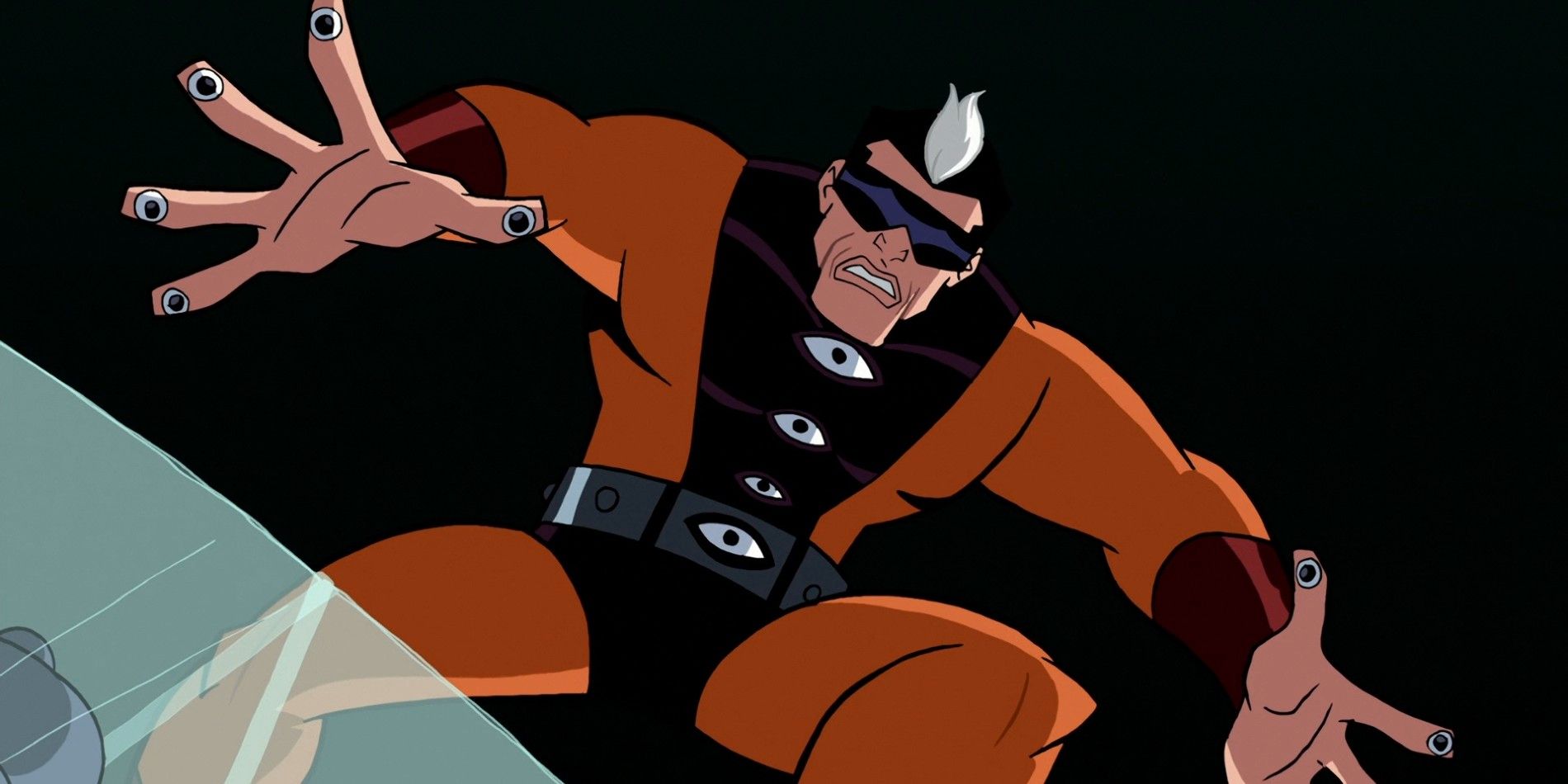
Nope, we’re joking here, guys. This supervillain’s gimmick is that instead of the regular pair of eyes that a normal person has, he’s got ten, granting him 360 degree vision. It’s just that the way in which he acquires this superpower has to be the most unintentionally hilarious origin story for a supervillain, ever; and we are counting every character that features on this list whilst making that claim, too! With a name like Ten Eyed Man, you’d think that it would be a literal thing- as in this person actually had 10 eyes strewn across his body, which isn’t something new, Danzo Shimura had 10 Sharingan implanted in one arm.
Or, at the very least, he’d have equipment that gave him that field of vision allowing for enhanced combat skills. Alas, this here character was created during the peak of the Silver Age of Comics, and you know what that means; his backstory is about to get real weird, real quick. Philip Reardon was a US Special Forces veteran who had served during the Vietnam War- nearly every new comic book character or storyline conceived during the late-60s and early-70s had some connection to the US’ greatest modern military disaster, because of course it did.
Now, ol’ Philip here was a decent enough soldier, but he became a “legend” because of a grenade explosion that left him with a permanent indentation squarely in the middle of his forehead, earning him the nickname “Three-Eye” Reardon; which we can’t imagine being a good look for him, especially with the ladies. But anyway, after returning from the war, he, like many Vietnam veterans, would gain employment in a law enforcement capacity, though probably not at the scale you are imagining.
He got a job as a security guard for a warehouse; go figure, eh? Despite this, Philip was committed to doing his job, managing to convince a group of thugs that he had eyes on the back of his head thanks to a well-concealed pocket mirror when they tried to rob his warehouse’s vault; so they decided to blind him in every way possible, battering him and leaving him disoriented with partial visual impairment; which would blow up into full-scale blindness when Reardon goes to the vault to try to stop the robbers and catches the vault-explosion right to his face.
Thanks to his brain already being scrambled like so many eggs, he incorrectly assumes that Batman, who had arrived on the scene to stop the robbers, is the culprit of his grave injury and vows revenge against the Dark Knight. Thanks to the efforts of an underworld doctor known only as Engstrom, Reardon was selected as the subject for a radical experimental surgery that promised to restore his sight better than before.
But neither Phil, nor you our dear viewers, are ready for what he did next. You’d assume that he would replace Reardon’s eyeballs with some kind of crazy technology or something, right? Well, Engstrom, the mad lad, only went and re-configured the neurons in Philip Reardon’s fingers to allow them to function as both his appendages, and- drum rolls please- his eyes! That’s right!
The Ten Eyed Man doesn’t see through eyes; he sees through his fingers, which have somehow gained the functions of his optic nerves as well! Now, we know what you’re thinking; a) that’s gross, b) it’s also stupid, and c) does he have eyeballs at his fingertips? The answers are yes, yes and no, thankfully, though they do effectively function as his eyes, giving him that 360 degree field of vision we were talking about earlier.
If you can’t tell by now, Ten Eyed Man is an obvious joke character- the guy literally goes blind if he catches things with his hands, for Christ’s sake- but that doesn’t make him less deadly. His enhanced field of vision coupled with his war veteran status does make him a rather effective low-tier villain.
In fact, during his first fight with the Dark Knight, he manages to defeat him by breaking down the “fake vision” apparatus that Alfred had helped him cook up. Everything from that point onwards, though, has been one hilariously tragic downward spiral for the Vietnam “hero”. If you truly want to understand just how hilariously non-effective Ten Eyed Man’s powers are, just watch the “A Bat Divided” episode from the classic “Batman: The Brave and The Bold” animated series; you’ll see what we mean.
Crazy Quilt
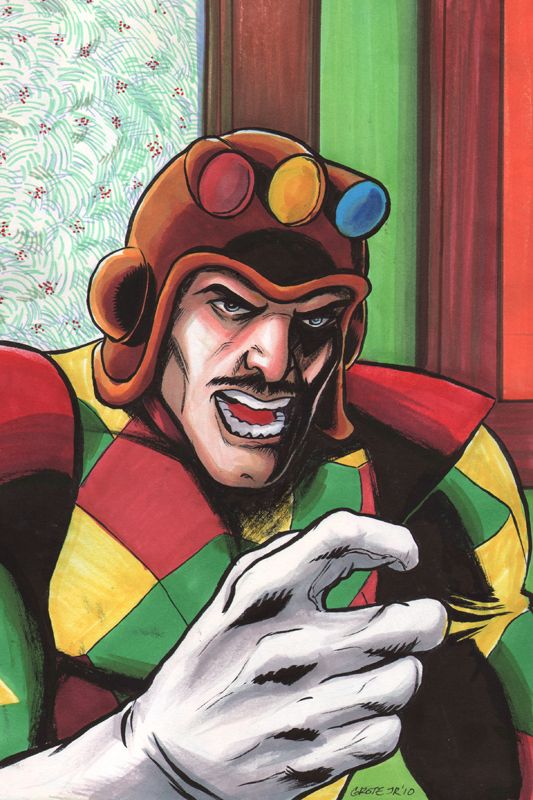
Okay, we’ve covered some exceptionally weird Batman villains here at Marvelous Videos. There’s the date-obsessed Calendar Man, who becomes a much more cerebral character over the years thanks to many great writers taking an interest in him. There’s Rag Doll; a comedic, Chucky-type character originally that became a pop-culture sensation thanks to CW’s The Flash.
And then there’s this crazy bastard who is literally obsessed with colours and quilting. No wonder he’s called Crazy Quilt! Created by the legendary Jack Kirby during his brief stint at DC, Crazy-Quilt was an exceptionally talented painter who led a double life as a criminal mastermind, using paintings to leave clues for his henchmen to follow up on and execute crimes without directly implicating himself. He was living a comfortable life as a wealthy art thief, until he was double-crossed by one of his own henchmen, tearing down his modest empire.
To make matters worse, in the ensuing struggle between the authorities and his gang, a gunshot wound severely damaged his eyesight, effectively blinding him. He volunteered for an experimental procedure to restore his lost vision by fusing a unique helmet directly to his optics nerves. While the operation itself was a success, Quilt was left with a unique form of color blindness; though his sight was restored, he could only see the world in bright, vivid colours.
This constant sensory overload drove him insane and he assumed the costumed identity of the supervillain we know as Crazy Quilt. Though he doesn’t have any innate superpowers, his helmet/visor more than compensates for that fact. Crazy-Quilt’s helmet allows him to hypnotize his victims using flashing lights of various colors and can also project lethal laser beams as well as blinding, getaway lights to facilitate an easy escape.
The visor functions as Quilt’s artificial eyes since his own eyes no longer function; the lenses feed their input signal straight into his brain, and he can see things even if the visor is placed on the back of his head. After being defeated repeatedly by the Boy Commandos (also created by Kirby for DC following up on the success of Captain America), he relocates to Gotham City and develops an impassioned hatred for the Boy Wonder, after being foiled by Batman and Robin in his early ventures.
Though the Dynamic Duo was operating as a team, it was Robin whose actions directly led to his downfall; this led to Crazy Quilt developing an impassioned hatred for the Boy Wonder, making him more of a Robin villain than a Batman villain. Indeed, so strong was Crazy Quilt’s obsession with ending the Boy Wonder that he nearly-pummelled Jason Todd to death a day into the latter’s tenure as the new Robin thinking that it was Dick Grayson under the mask. He continues to harangue the Bat Family till this day with his avant-garde costume, his crazy powerful helmet and his gang of modest yet artisanal thugs.
Polka-Dot Man
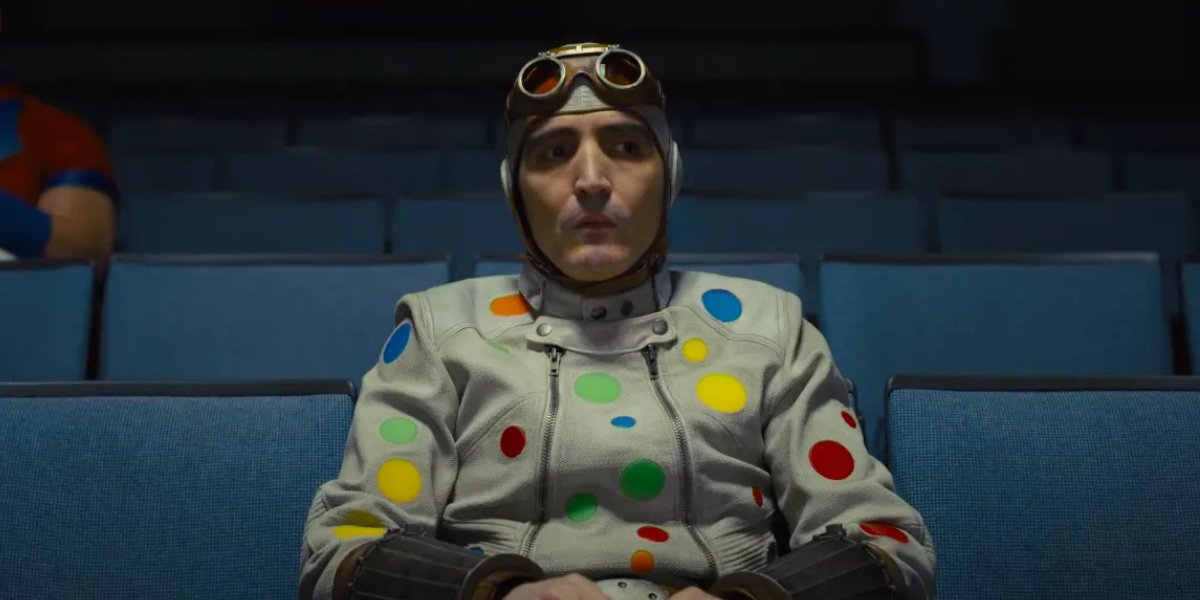
Man, hats off to David Dastmalchian for pulling off such a bizarrely comical character with his signature aloofness. But the fact that the Suicide Squad 2021’s Polka-Dot Man has superpowers and intense mommy issues is something that James Gunn and his creative team came up with; and while we agree that it adds personality to what is an objectively circus-like character, it kind of takes away from the fact that Polka-Dot Man is supposed to be taken as something of an in-verse meta joke by us, the audience as well; because any character that thinks “Stay away or Dot’s all she wrote” while wielding a baseball bat and dressed up in a multi-colored polka-dot leotard is intimidating has to be either joking or crazier than The Joker; we lean towards the former, but the latter isn’t a far-fetched possibility either.
Debuting in Detective Comics issue #300, it’s evident that Bill Finger created this character to get out all of his “on the dot” puns and jokes out of his system; because if you read the issue itself, you would be surprised at the number of puns Batman himself cracks during the entirety of its length. The Dynamic Duo had been called in to the Spot Carpet Cleaning Company; whose tagline, we assume, was “We’ll make ‘em Spotless”.
If it wasn’t, it’s a damnable shame. When Batman and Robin arrived on the scene, they were greeted by a most-peculiar sight; 2 rather normal-looking thugs were trying to break into the company’s primary vault to carry out what was a blatant robbery, but there was a third man amongst them who looked like he’d lost his way home from the circus. That man would be Abner Krill, the costumed nuisance who started off his criminal career as Mister Polka-Dot.
After declaring his intention to make his name known throughout the underworld, Krill proceeds to show off the features of his costume which he believes will be his ticket to fame; once he takes out Batman, of course. And to be completely fair to Abner, his costume is a work of mechanical genius. Every polka dot on his costume remained inert at long as it was attached, but once detached, could be utilized in a hundred different ways, all controlled by complex electrical relays in the suit itself, and none of which was known to his enemies.
Polka-Dot Man had such dangerous weapons as a Buzzsaw Dot- which is exactly what it sounds like- a Sun Dot (which could project blinding lights) and a Flying Saucer Dot, which performs just as advertised. Even his “grand plan” was polka-dot-based, as Batman figured out that his hideout was likely the head of a massive dot-connected-man that ran across Gotham City in the form of the locations of Polka-Dot Man’s crimes.
Dick Grayson, the first Boy Wonder, infamously used a tracking leopard (yes, it’s a real thing, check it out) to bring Krill to justice; a fact that has made him the butt of the joke of the supervillain community, usually the feline kind. After that, he vanished into obscurity and ended up in Batman’s Bureau of Missing Villains before re-surfacing sporadically to team up with D-list villains on his scale, like Condiment King.
Polka-Dot Man was ruthlessly murdered by the Human Flame when he went on a rampage, but has made appearances primarily as part of Task Force X since then, being brought back to life thanks to DC’s re-boot happy trigger finger. 2021’s The Suicide Squad makes him a metahuman, turning his polka dots into shape-shifting gadgets rather than electronic gizmos, which kind of takes away from his comic book credibility; not to mention the fact that his death was the equivalent of what his Peacemaker co-star would call a “cheap pop” for the audience. But overall, Polka-Dot Man will be fondly remembered as a by-product of a bygone era, given a new (if short) lease on life by the comedic genius of James Gunn & Co.
Duela Dent – The Joker’s Daughter
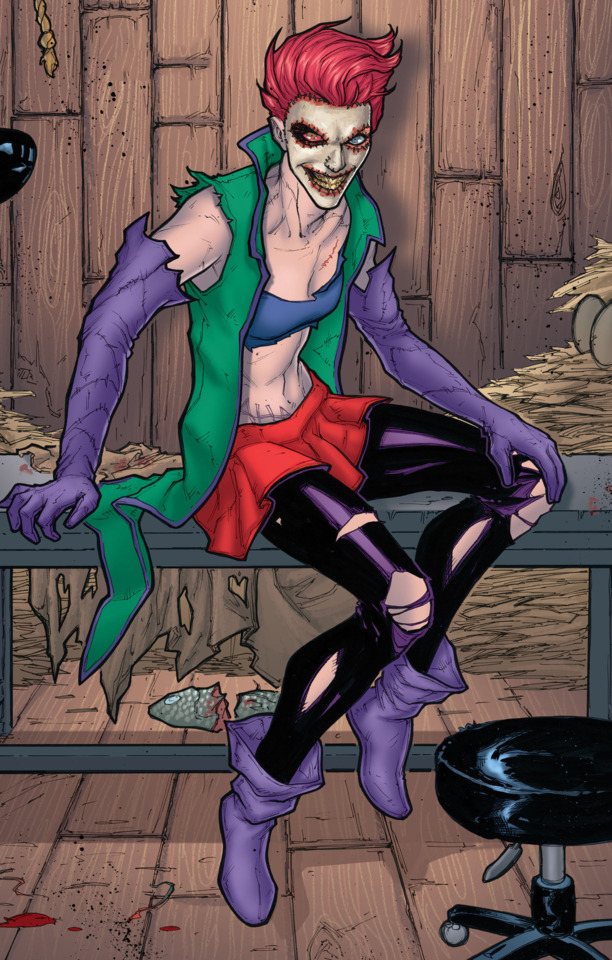
Any character that claims to be the daughter of the Clown Prince of Crime- let alone actually being that- has to have a couple of screws loose in their head. And once you’ve taken stock of The Joker’s Daughter, you’ll realise that she doesn’t have a couple of screws loose; they’re missing from her head altogether! Initially, we didn’t even know whose damned daughter she was, because she claimed that she was the following people: Catgirl, the daughter of Catwoman; Scarecrone, the daughter of Scarecrow; Riddler’s Daughter; Penguin’s Daughter; basically, think about every iconic Batman villain from the 70’s, and she claimed parentage from them.
Eventually she said that Harvey Dent was her dad and he abandoned her and her mother because she wasn’t “born in a pair”, and that her name was Duela Dent, but Nightwing is able to deduce that even this is a lie given how old she was around the time of Donna Troy’s wedding. Even though her parentage remained shrouded in mystery for nearly 30 years, she solidified herself as being The Joker’s Daughter- both in spirit and later in actuality- through her actions. How?
Well, firstly, she loved getting violent like her dad, and was not afraid to show it; even sporting a face that looked like his, albeit her locks looked like they’d been shocked to make them spikier. And then, during the events of 2007’s Countdown Presents The Search for Ray Palmer: Crime Society, which sets up the Final Crisis, it is revealed that Duela Dent is in fact the Joker’s daughter; she’s just not from this Earth.
On Earth-3, where the Crime Syndicate of America resides, The Joker’s heroic counterpart The Jokester has an affair with Three-Face aka Evelyn Dent and sires a child with her without his knowledge. This child is then raised by her step-father The Riddler and becomes a part of The Riddler Family; Earth-3’s primary team of superheroes.
However, thanks to the spatial & temporal anomalies caused by the multiple crises events that have occurred throughout DC, somehow Duela’s soul has been able to bump around her various multiversal selves, until it finally came into the main continuity and went insane like her father’s evil counterpart.
As crazy as all this might be, the New 52 managed to make her even crazier. In this rebooted version of The Joker’s Daughter, Duela Dent is born psychotic, with her parents scared being openly scared of what they’d created. The child would make corsets out of barbed wire, bed-mobiles out of knives, and was even found giving herself the Faceless Men treatment once by her parents; after which they decided they had to get rid of her, and she ran away from home upon finding this out.
She escaped to the Gotham City sewers, where she came upon the Joker’s face, and found the power of presence it gave her so intoxicating that she decided to make him her “father”. She orchestrated a series of devastating crimes across the entire city to lure out Dollmaker- the very man who had performed the “facial reconstruction surgery” per Joker’s request.
Duela makes him graft Joker’s face onto her own and then injects herself with “her father’s blood” to complete her transformation into The Joker’s Daughter. This is a decidedly darker iteration of the character, as you can tell, and Duela Dent herself remains one of the most violently entertaining- and entertainingly violent- enigmas of the Batman rogues’ gallery.
Kite Man
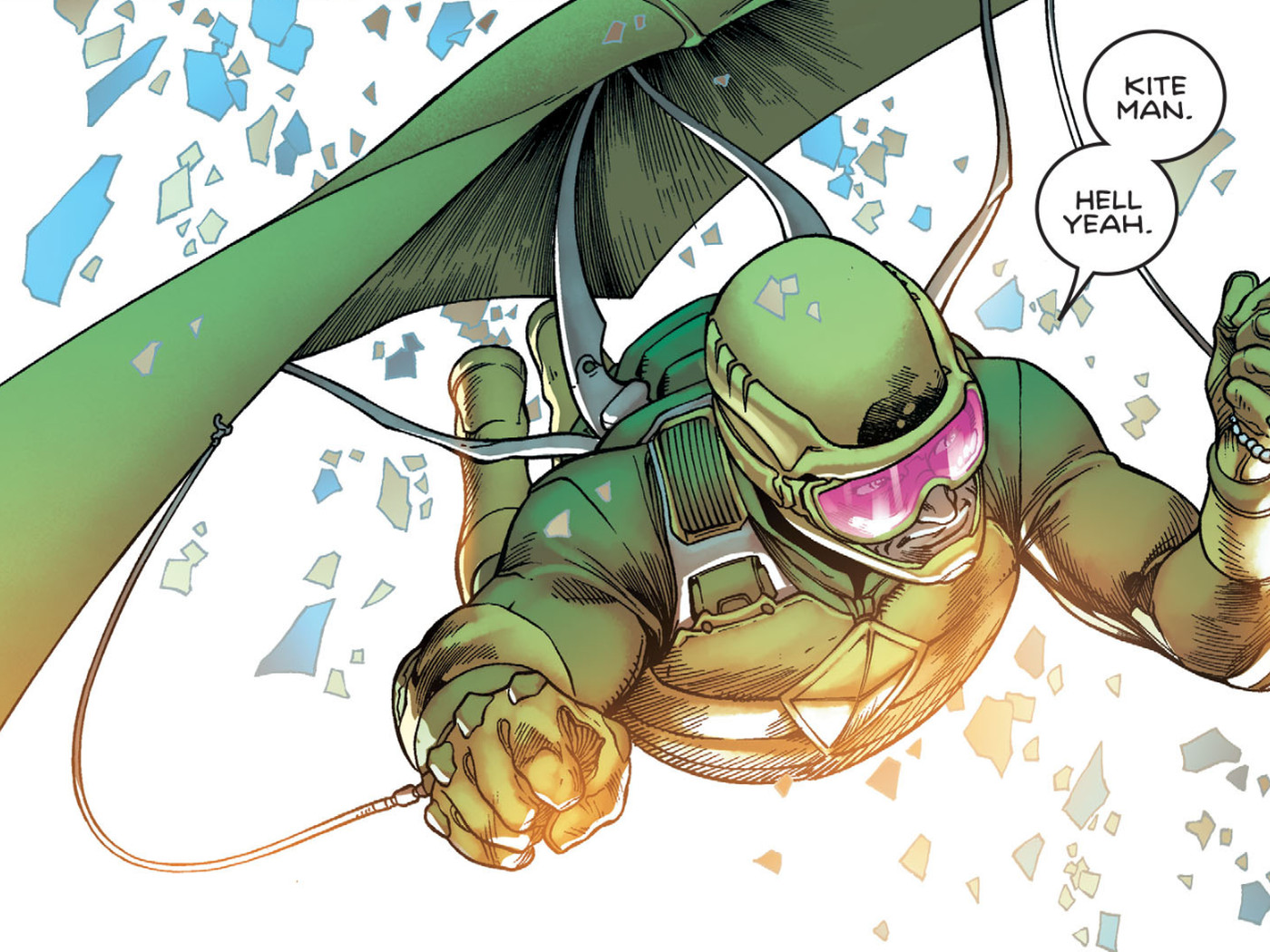
You know how we just referenced all those novelty characters in our previous entry (do check them out, by the way, their origins are more horrifying than anything you can imagine!)? Well, this character is just like them, but he is so much more; and by that, we mean so much more of a joke that he is the literal punchline of Batman’s rogues’ gallery.
Imagine a guy so pumped up by his love for kites, hang-gliders and hang-gliding in general, that he decides to make a criminal career out of it. Well, luckily for you, and unluckily for us, you don’t have to because that’s exactly what Charlie Brown is. Rats! We mean Charles Brown, aka Chuck. Out of the cavalcade of bizarre oddities that exist in the rogues’ galleries of DC superheroes, perhaps none is as brave- or stupid- as Kite Man, a fact that was ridiculed to the point of becoming stale during the “War of Jokes and Riddles” storyline.
After all, who can take a character that flies around on a jumbo hang-glider, uses kite-themed paraphernalia and shouts out “Hell Yeah” for no apparent reason, with any ounce of seriousness? Debuting in Batman #133 and created by Bill Finger and Dick Sprang, nothing was explained about Brown’s infatuation with kites for several decades aside from the fact that he was really into them as a child. In fact, even his name wasn’t revealed until 1986’s Hawkman Vol. 2 #4 was published, a full 26 years after Kite Man’s first appearance.
All that was known about him was the fact that he was a joke in both the superhero and the supervillain communities. 2016’s Rebirth event rebooted the entire DCU and finally gave us an answer as to why Kite Man does what he does, and it was more tragic than we could have expected. In Batman Vol. 3 #27, it was revealed that Chuck was a former aerodynamic engineer who was responsible for creating the Jokermobile.
Chuck had a son who thought his dad’s obsession with kites was cool, and one time he even exclaimed “Hell Yeah” at the sight of his father with a kite. When the Riddler killed his son by poisoning his kite string, Chuck decided to create a customized glider and, adopting his son’s words as his villainous catchphrase, became the Kite Man. He joined the Joker’s side during the War and was essentially comic relief throughout the arc, eventually siding with the Caped Crusader against both parties involved.
Kite Man provided the kites that Riddler’s team used to invade Joker’s secret location, and it was his kites that helped clean them up as well, thanks to a little help from Alfred and the Bat-Blimp. Kite Man isn’t an inherently evil person. He is just as he appears to be; a goofball character whose kite-inspired gimmick forced Batman to fly the rarely-glimpsed Bat-Kite on a couple of occasions.
But with the layers that his character has received as of DC Rebirth, Kite Man has become one of the more tragic supervillain characters in the D-List of Batman’s rogues’ gallery; not to mention he was killed and eaten by the ruthless Intergang boss Bruno “Ugly” Mannheim before Rebirth brought him back, so you know, “Kite Man! Hell yeah!”
Killer Moth
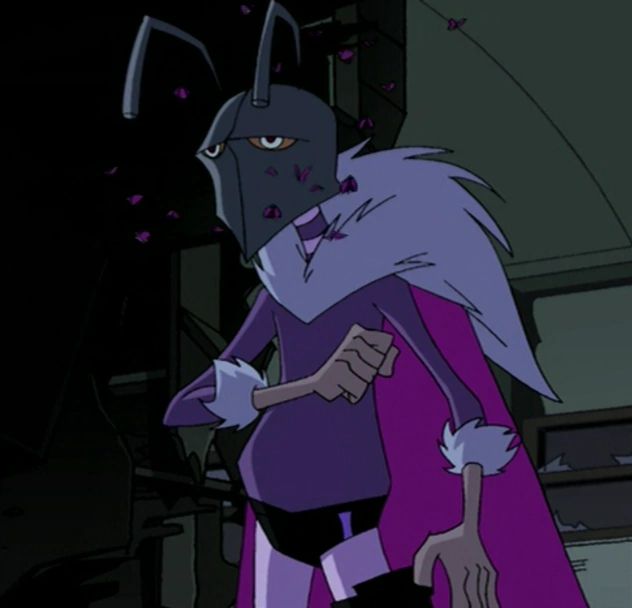
Imagine a version of Bruce Wayne that had no moral compass, consorted with supervillains and was so laughably terrible at his job that even his peers didn’t take him seriously. Now, imagine his costume was green-and-purple, with a bright orange cape and a literal moth mask. That’s the kind of criminal the original Killer Moth was, and when your own henchmen don’t take you seriously, that’s the sign of a truly comical meta existence. The OG Killer Moth was a prisoner identified only by his prison number, 234026.
While in prison, he reads a newspaper article about Batman and becomes obsessed with him, scouring every piece of information he can about Gotham’s Caped Crusader. Seeing the allure of a “life of crime” and having ingrained most of Batman’s modus operandi into his conscience, he decides to set himself up as the “anti-Batman”. He establishes the fake identity of millionaire philanthropist Cameron von Cleer and starts hiring himself out to Gotham City’s criminals to help them elude capture by police.
Upon his release, he uses the hidden proceeds of his crimes to build a criminal identity that mirrors Batman’s in every way imaginable, and turns into Gotham City’s Killer Moth. In his efforts to emulate Batman, he creates his own moth-theme paraphernalia like the Mothmobile and the Mothcave, modeled after journalistic speculation on the Batcave’s actual layout design. He’d even take on a sidekick at one point and creates his own Moth Signal- an infrared distress call that would only be visible to Killer Moth, allowing him to rescue his clients before they get into deeper troubles.
Much like most of his Golden Age compatriots, Killer Moth languished as a D–list villain for ages, teaming up with other smaller villains like Calender Man and Catman to create the meta-villain group called The Misfits. In fact, he was so ineffective as a supervillain that after a time, Batman and Robin would leave him for the police to arrest. Unlike most of them, however, Killer Moth had relative longevity, despite being considered a joke on both sides.
He’d become a much more sinister character, too, when the demon lord Neron transformed him into the monstrous Charaxes during the events of Underworld Unleashed. The Demon Lord granted Drury Walker- that’s his name, by the way- his wish of being feared instead of ridiculed by everyone by transforming him into a gargantuan moth-monster whose cocooning powers far exceeded those of Killer Moth’s Cocoon Gun.
As Charaxes, Killer Moth became a true monstrosity for quite a while. He could fly, had razor-sharp claws and teeth for some reason, and could capture people in cocoons made out of acid that would eventually, you know, perform as advertised on the label.
Think Breaking Bad season 1 episode 2; if you know, you know. Charaxes eventually goes on to lay multiple eggs that hatch Drury Walker clones, whom he hates, but can’t kill. Frankly, it’s one of the rarer times that we were happy Superboy-Prime showed up to deal with something; if he hadn’t ripped apart Charaxes and left him for the retconn gang to clean up later on, who knows how gross Killer Moth’s story could’ve gotten?
Or worse yet, how much more dangerous would it have been? Still, he’s considered to be the relic of a bygone era by Batman himself and is defined by his unusually elaborate yet ultimately fruitless schemes that have cemented his legacy as an underrated and unintentionally hilarious part of The Dark Knight’s rogues’ gallery; never change, Moth. Never change.
Victor Zsasz
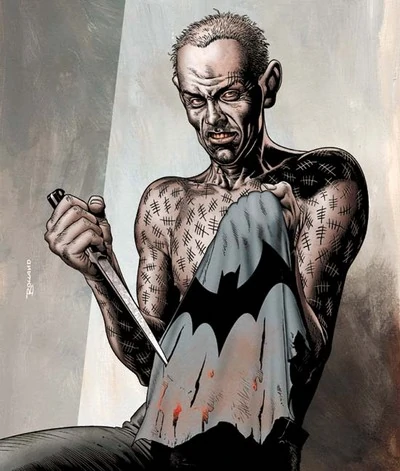
We at Marvelous Videos truly believe that you haven’t lived if you haven’t seen Anthony Carrigan play Victor Zsasz in Fox’s Gotham. The man manages to make a ruthless, self-mutilating madman seem like an endearing boy-next-door with a passion for the disco, one-liners, pepperoni pizza and murder. Carrigan’s portrayal of that sadist mob hitman whose reputation precedes him and yet whose personality carries so much more lightness to it is pitch-perfect. We point you to the wedding-crashing scene, any time he interacted with Falcone or Penguin, and the most-iconic Victor Zsasz line from the TV show: “You guys got any cans of peaches?
God, I’d give an arm and a leg for that. Not mine, though; someone else’s.” Carrigan tows the line between psychotic and endearing so perfectly that it almost makes you forget that the true Victor Zsasz is a soulless murderer whose only motivation in life is to kill; and who also happens to prefer knives to guns, and slitting throats to exclaiming “it’s Christmas” when he gets an AR.
In fact, the only thing that connects any of the mainstream portrayals of Mr. Zsasz to his true comic book persona is the fact that they mark down their kill count on their own flesh in the form of so many tally marks. Other than that fact, they are practically different characters, and perhaps that’s a good thing, because the real Victor Zsasz is too disturbing for TV.
The realization that life is ultimately meaningless can do two things to a person: it can drive them to make a name for themselves so their legacy lives on beyond their mortal flesh, or it can make them so hopeless that they give in to despair and, eventually, madness.
If you ask Victor Zsasz about it, he’ll tell you that he isn’t crazy; he has no dysfunctional family background, no childhood abuse or trauma, he just kills because he chooses to. Mr. Zsasz lived a privileged existence. He had a loving, wealthy family and graduated top of his class in college, later going on to amass his own fortune of his own through various companies. At the age of 25, his parents tragically died in a boating accident, and while he accepted what had happened, Zsasz could not help but feel depressed at their loss.
In an attempt to distract himself from his growing depression, Zsasz became swept up in high stakes gambling and ended up losing everything to the Penguin. Dejected, he realized how hollow life is and how “robotic” human beings have become in their pursuit of it. Before he could commit suicide, he was attacked by a homeless person with a knife and he saw the same hollowness within his eyes.
Deciding to take out these “zombies” from the world in order to make it a better place, he kills that man and carves a tally mark on his own flesh, transforming into the vicious serial killer Mr. Zsasz. Victor is by no means a superhuman, being flesh and bone like the rest of us. But what makes him such a deadly threat is, in fact, his isnanity; Mr. Zsasz will risk anything to kill anyone based on his whims.
He has no pattern, no rhythm, no rhyme or reason for killing, making him practically invisible when he wasn’t serving time at Arkham. He’s escaped that joint multiple times, too, displaying unparalleled criminal genius in that crazy head of his. Zsasz might hate guns and have a body that is indestructible in the lunatic sense not the literal, but his true strength lies in the fact that he is schizophrenia personified and given a bunch of knives to act out with.
He debuts during The Last Arkham storyline as its focal character and has sneaked up on Batman on several occasions; a feat even Catwoman fails at performing sometimes. Aside from the Joker, Zsasz is probably the only person to really get to Bruce, when he says they’re in fact very similar and the Dark Knight nearly pummels him to death in a blind rage at one point. Judging by his actions, we’d say that when it comes to this murderous maniac, it’s best not to trust what he says; even about himself.
Cornelius Stirk
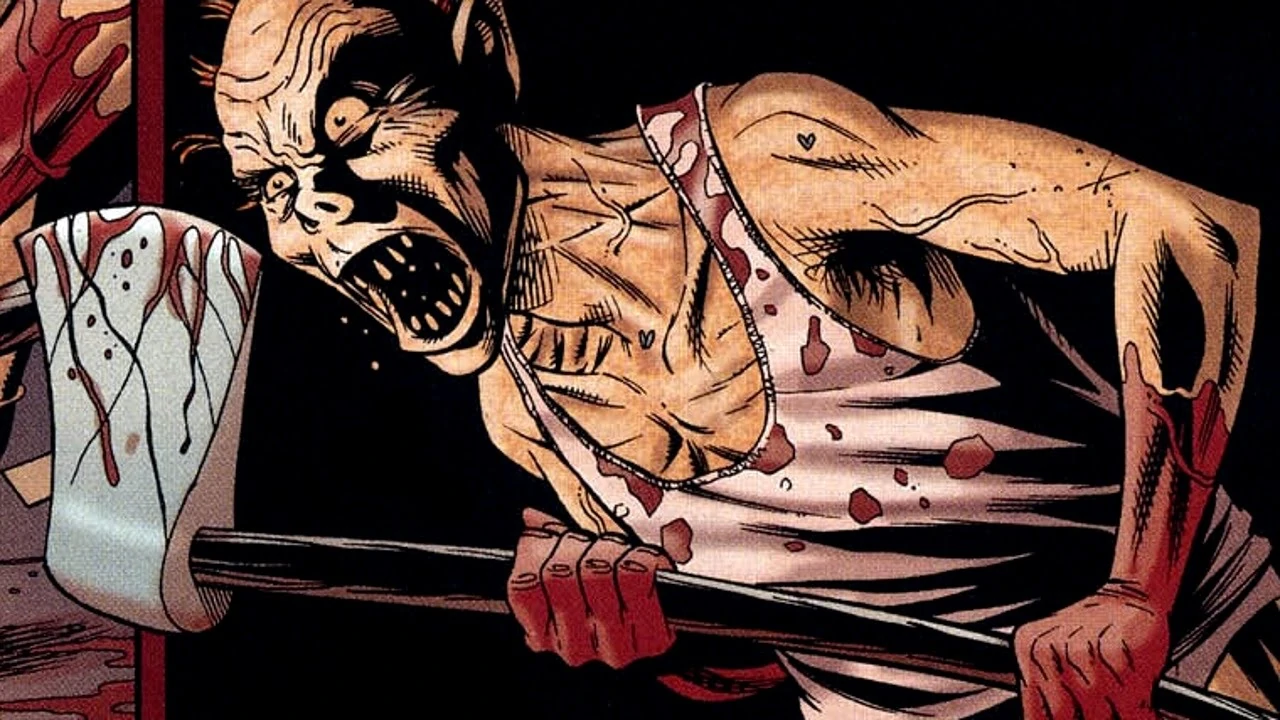
If you’re the kind of Hannibal Lector enthusiast who would love a bit of fresh heart soup dashed with Scarecrow’s fear toxin for an extra kick of unholy depravity, then Cornelius Stirk is the chef you want; because his defining trait is a combination of both of the things that we’ve just mentioned, and his existence STILL won’t make proper sense to any of you. So we’ll try our best to make it as simple as possible. Here it goes. Cornelius Stirk has spent as many years in Arkham Asylum as he has outside of it, having been institutionalized at the age of 16 for trying to kill his classmate.
Bright start. Over the course of the next 16 years, Stirk was kept heavily-medicated because he had a peculiar ability; whenever the doctors would try to treat him, his face would transform into that of a person they loved and trusted- like a lover or a family member or a friend- or into that of a person they absolutely loathed and feared. Depending on which face you saw, he could hypnotize you into doing his bidding, thanks to the psionic powers that lie dormant in his mind.
All of this made him more of a threat than any other member of Arkham, and so he was kept well-medicated for most of his time there. But eventually, he learned how to channel his powers, and planted suggestions into his doctors’ minds, convincing them to clear him as “sane” and get him out of that hellhole.
After spending a week on the outside, Cornelius Stirk embarked on a rather unsettling journey for a rather specific source of nutrition which his demented brain believed was the only kind of nutrition he could truly ingest anymore: that being the norepinephrine and adrenaline being released by the heart of a person who died terrified, creating an “organic stew of fear”; which, by the way, is just all kinds of grim.
Even Scarecrow doesn’t have a hard-on for Fear as hard as this guy does, and he’s of the Leatherface variety too; though his physical disfigurement is likely a result of the same hypothalamic abnormality that gave him his powers. If you’re a regular guy and Cornelius Stirk decides to turn you into his steak dinner for the evening, there is nothing you can do about it. He will hypnotize, brutalize and victimize you to get his way.
We would like to say that Batman got lucky by capturing Stirk on his third victim, but after finding out his preferred modus operandi, it’s one of those rarer moments where even the necessary collateral damage will haunt you for the rest of your life, simply because you know what happened to them. We’re honestly glad that Batman is able to take down this evil cannibal, thanks to his highly-organized mind, because only he knows what he would’ve done had he been left free to roam the streets of Gotham City. And based on what he’s done so far, we can safely say that it would be nothing good for them.
Flamingo
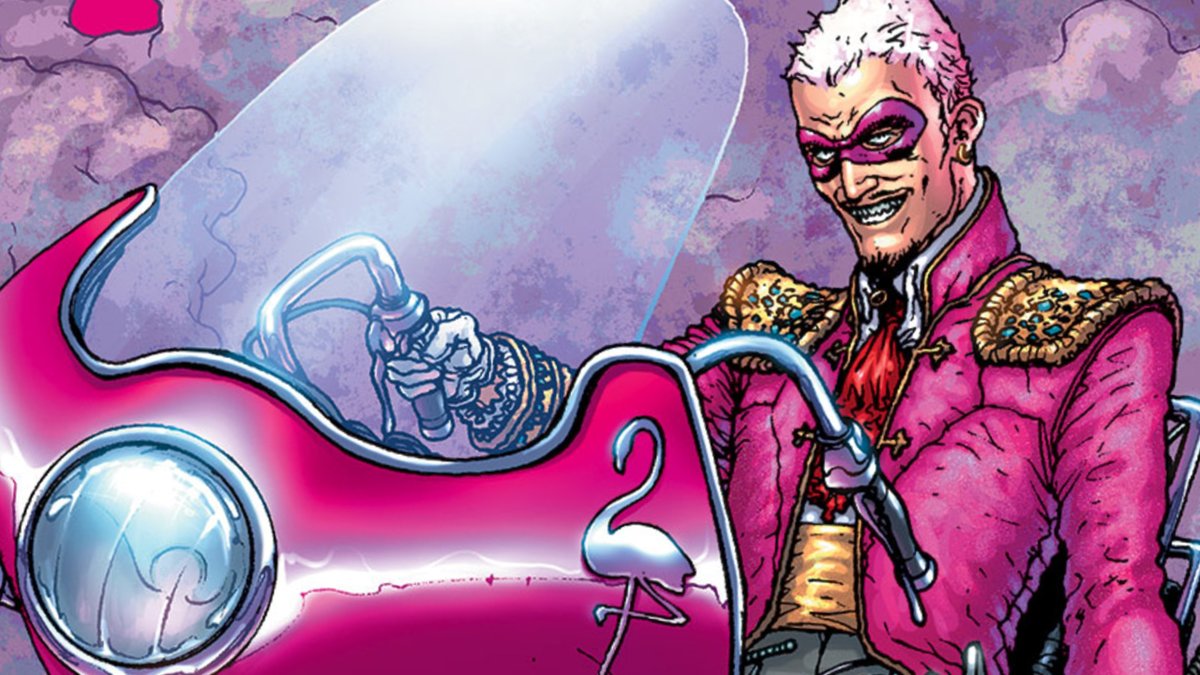
Eduardo Flamingo is a preening peacock of a supervillain if we’ve ever seen one; or rather, a flamingo. One quick look at him will send you careening off to a corner grabbing your gut; after all, what kind of self-respecting hitman takes a flaming hot pink motorcycle to an assassination?! That takes a dump on the entire hitman series and community as a whole, because the first rule of being a contract killer is to hide within shadows and operate from the dark.
But Flamingo is the literal opposite of that, choosing to get right up in his targets’ faces with sub-machine guns and biting off more than he can chew; and unfortunately, we do mean that quite literally. For you see, though Eduardo is named after that majestic bird, there is nothing graceful about the work that the Flamingo performs. Grant Morrison created him to be the “anti-Christ” figure to Batman’s Zorro; and we have to say, he did a pretty good job of it.
Though he debuted in the same issue as Professor Pyg, which would be Batman #666 aka Batman in Bethlehem, he would take on a more prominent role in Batman’s rogues’ gallery following the events of 2009’s Batman and Robin #6. Eduardo Flamingo use to be an ordinary man with an ordinary family who used to struggle for his life and a decent existence against the criminal organization known as the Mob, which was most-likely the ruthless Penitente Cartel that operated out of Mexico.
Though going was rough to say the least- just ask Nacho Varga how long a life opposing the cartel lasts- he managed to hold out his defiance against their operations for quite a while; until they finally caught him and brainwashed him into oblivion. Subjected to intense mental programming and trauma, Eduardo was transformed into a deathly-effective and deathly-psychotic serial killer who- and we wish we were kidding here- dines on his victims’ faces.
He proceeds to nonchalantly kill all of his family members and then becomes a contract killer for hire for the same cartel that literally tore him apart and remade him from scratch. As The Flamingo, Eduardo gains notoriety for being exceptionally effective at his job despite being completely off his rocker; his handler, Gabriel Santo, says of Flamingo’s efficacy that his “kill record is impeccable”.
The Penitente Cartel was planning to get a huge shipment of drugs into Gotham City so they could get the populace addicted to them and make fat profits off of the induced drug epidemic, but Red Hood foiled their plans by blowing up the shipment; which is why The Flamingo is in Gotham City. Though he has no superpowers, Flamingo’s feral ferocity and expert marksmanship make him a lethal asset for any organization; barring the garish, anti-stealth pink outfits that he insists on wearing.
He’s skilled enough in hand-to-hand combat to stave off Batman and Robin AFTER taking out Red Hood and Scarlet. And he didn’t just take out Red Hood and Scarlet, either; he systematically dismantled all for costumed vigilantes, with Robin getting shot 5 times point-blank by this mad man in pink.
He almost killed Jason Todd in this encounter as well, whose life was only saved by Dick Grayson’s intervention as Batman. It’s safe to say that had the four members (kinda) of the Bat Family not put aside their differences and worked together to defeat the Flamingo, he might have wiped the floor with all of them at the same time, while riding his ridiculous pink motorcycle; and if that isn’t a terrifyingly hilarious mental image, then we don’t know what is.
Jane Doe
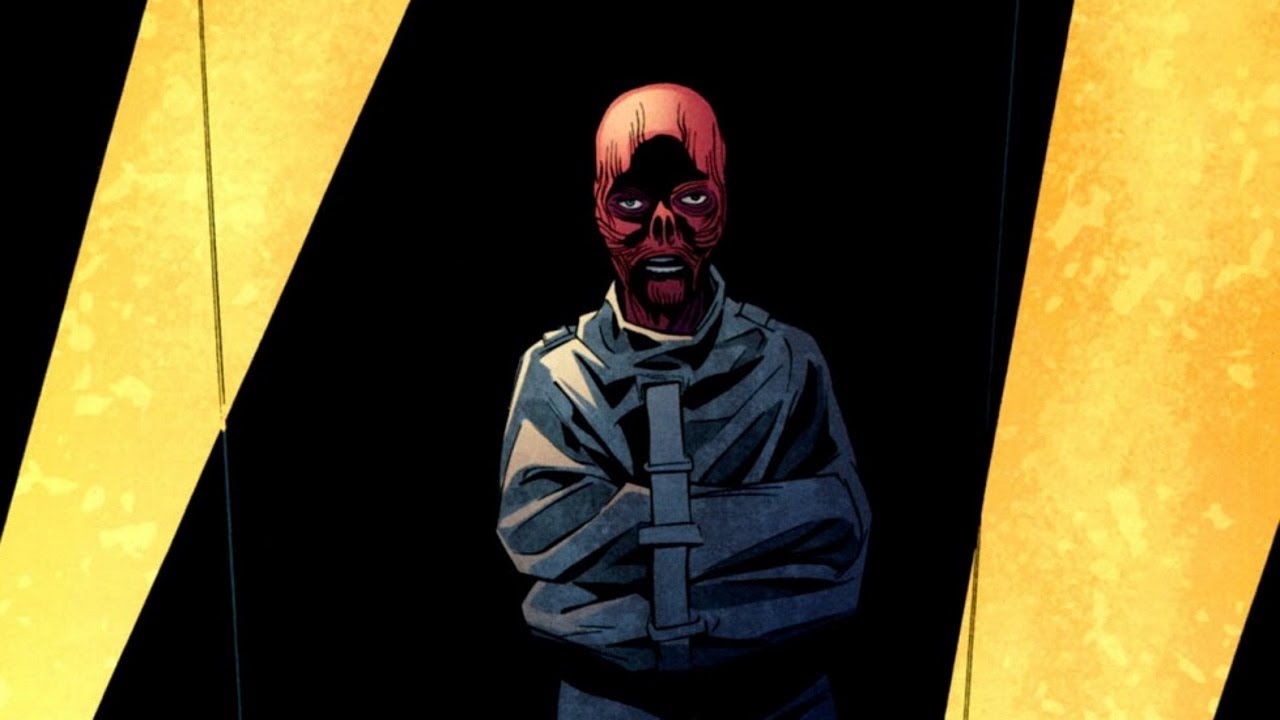
You guys remember the Faceless Men from Game of Thrones, right? That uber-mystical cult of assassins who worships a death god, charges exorbitantly high rates per kill, and somehow knows how to impersonate other people by “stealing their faces.” Well, take that concept and apply it to a person’s entire body and you get a rather literal “skin-changer” whose existence itself is a cipher by her own admission. In the context of law enforcement, the word Jane Doe is associated with a cadaver that the authorities cannot verifiably identify.
Dan Slott and Ryan Sook took this premise and created one of the most brutal female serial killers to ever grace the pages of a comic book. Debuting in Arkham Asylum: Living Hell #1, it was initially assumed that she was Dr. Anne Carver; the psychologist assigned to mob boss Warren White.
It soon became clear that she was actually on the payroll of Jeremiah Arkham, the maniacal warden of Arkham Asylum who held a personal grudge against White for making him lose his pension thanks to White’s corrupt business practices; and even Batman’s intervention cannot stop Arkham’s planted psychiatrist or his madhouse of literal freaks from making White actually go crazy; instead of simply pretending to be insane to get out of his legal troubles.
During a particularly brutal riot at Arkham Asylum, Jane manages to trap White in a sub-zero cell designed to contain Mr. Freeze and plans to take on his identity to hoodwink him out of his fortune. Sadly for her, Jeremiah Arkham’s quest to drive Warren White succeeds by her own hands, as he emerges from the cell as the Great White Shark of Gotham City. He eventually breaks out of imprisonment and nearly pummels Jane to death, but Doe slips through his fingers and starts pursuing her own criminal career.
Jane Doe’s “superpower” is also her greatest curse. She suffers from extremely psychological impairment, to the point that she doesn’t have an identity of her own and seeks to “become” the person she targets. To accomplish this, she has stripped off her own skin and mastered the ability to mimic a person’s body language and voice down to the last syllable.
When she picks a suitable target, she takes them out using her more-than-adequate combat skills and then “wears” their skin to completely subsume their identities. And she employs these skills with lethal efficiency, as was made evident during the House of Hush storyline where she managed to maim the titular villain to the point of disfigurement in her attempt to become Bruce Wayne and take over his multi-billion dollar empire. To this day, no one knows Jane Doe’s real name, including Batman; and he knew The Joker’s real identity from the beginning allegedly.
Matilda Mathis – Dollhouse
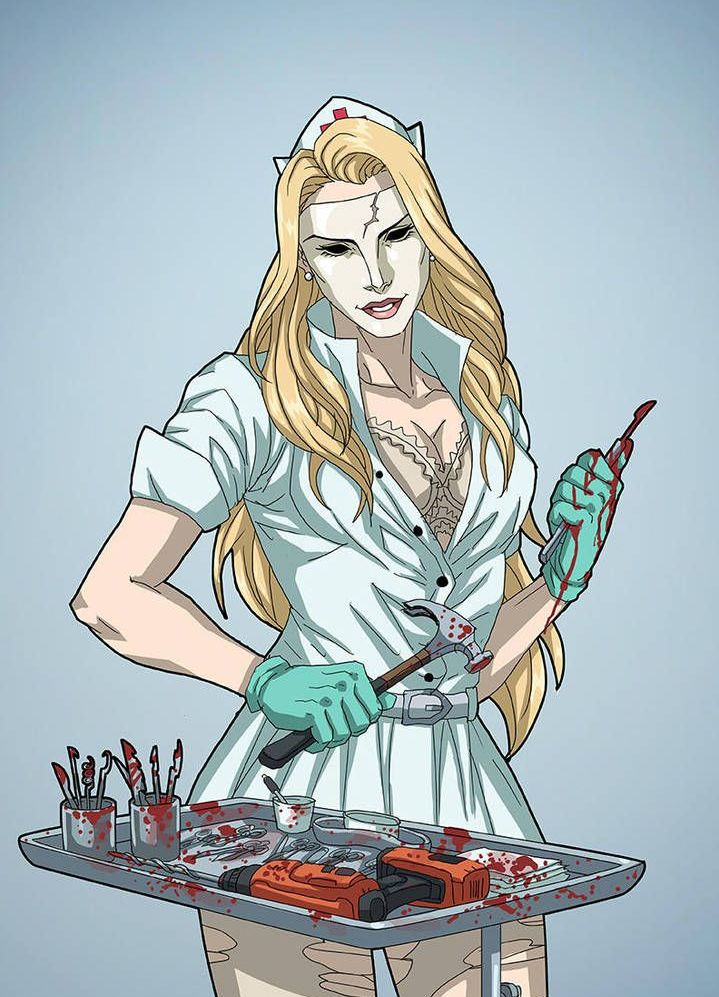
Okay, so we can all agree that the Dollmaker started out as a joke and then turned into a nightmare that we would sooner forget, right? I mean, the character started out life as a one-off Plastic Man villain, then graduated to becoming Toyman’s psychotic son with- you guessed it- intense mommy issues. And then he went on to start a career in criminal insanity thanks to the New 52 reboot and the introduction of Barton Mathis aka Dollmaker 3.
Before the New 52, Dollmaker was always looked at as more of a comical reflection of Chucky with a darker side in that he used children transformed into Dollotrons who would serve his every need. Wait, that’s not right; ah, yes, he’d turn them into “living dolls” that would die upon being “deactivated”, sorry about the mix-up Professor Pyg. No matter how you look at things, Dollmaker was more caricature than character for a good portion of his existence; that is, until Tony S. Daniel re-imagined him as a The Hills Have Eyes-inspired serial killer.
And no, we’re not talking about the Carters here, sad as that might be. As a child, Barton Mathis saw his own Papa Jupiter (aka Wesley Mathis) hunt and feast upon his “prey” during the many “hunting trips” they took with each other. At some point in time, he learned how to make his dolls from his spiritual father The Toymaker, and became an adept- if horrifying- surgeon in his own right.
As The Dollmaker, he targeted Batman and his brethren with his own family; and that’s where Dollhouse comes in, the equally-if-not-more-insane daughter of Barton Mathis. Mr. Mathis was not one to shy away from family tradition you see, grim as it was for regular humans like us. And so, he took his daughter on similar trips and instilled in her the same values that “Grandpa Wes” had left him with, turning this innocent child into a feral beast fixated on creating life-like dolls for her “dollhouse” by using real-life limbs from her victims.
And just as an exclamation point, where Barton Mathis Dollmaker can be paralleled with Leatherface in terms of his face mask, Dollhouse is somehow even more unsettling, taking her inspiration from Black Mask most likely and getting an expressionless mask of porcelain grafted onto her own face when she became an official member of her father’s “family”. Dollhouse has proven herself a fierce fighter and a decent surgeon in her own right, as after her father was defeated and incarcerated, she was able to take up the reigns and continue the family business of human and organ trafficking pretty much at the same level.
But all this is kinda moot when you just stop and consider that this little girl attached a friggin’ ceramic face mask to her facial skin just to prove her loyalty to her father. Now if that doesn’t spell out “crazy and deadly” to you guys, we don’t know what does. Despite having few appearances across DC cannon, it can’t be denied that Matilda Mathis aka Dollhouse is one of the most unsettling and uncanny residents of the Omniverse; and the less is said about her, the better it will be for all of us combined.
